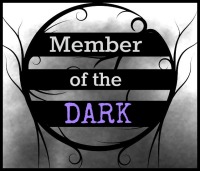
Yahoo Image Search
I like to included humor in my stories. Yet, I don’t want them to be seen as comedies. I like to touch on heavy topics in my stories. Yet, I don’t want them to be seen as serious dramas. That means I need to have both and keep things balanced. That isn’t nearly as easy as some people believe. You can’t throw the two around whenever you feel like it in the hopes of creating an equilibrium. Humor and heavy can clash like battling titans instead of uniting like pieces of a puzzle. So, what are some ways to handle this?
- Whichever one is going to be the main tone of the story should be introduced from the beginning. If you want to have a serious story with humorous sections and conversations then you need to set the heavy stage. If it’s supposed to be a comedic tale that moves into serious territory then start with the funny. You do have a runway to work with since the opening is more character and world introduction, so the tone may be neutral first. Eventually, you need to decide on who gets the bigger slice of pizza.
- Heavy topics can overshadow everything. The moment you go heavy or dark, the harder it is to add humor or even casual pieces. This is because heavy is designed to touch on the darker emotions such as anger and sadness. You want to stir these in the audience to get them into the tone. Humor is lighter and aims to get people to laugh, which might not be easy to do if they’re already provoked by whatever topic you’ve picked to get them serious. So, hold off on the heavy if that’s not the main tone of the book or try not to go too deep into the void to maintain some humor.
- Humor doesn’t always break tension in a good way. If the scene is supposed to be serious to get a point across then throwing humor in could destroy that. Think about having a deep or serious conversation only for it to be derailed by somebody cracking jokes every few minutes. Readers will think that the author doesn’t really want to talk about this subject or that they are mocking it. Read the room you’ve created before you insert humor.
- Heavy and humor are not universal. A way to maintain balance between the two is understanding that every person handles things differently. For example, some people grieve in solitude while others search out another person to talk to. Others may become self-destructive and another group will be logical about the loss to prevent any emotions. With humor, you have some who will crack jokes and others who won’t find much funny. Try to vary these reactions among your characters to help the audience see them as individuals instead of emotional copies of each other.
- Dark humor could be a useful tool in adding comedy to heavy stories. You have to be careful in how you use it. Some people can perceive it as mocking the subject matter if it hasn’t been used prior to the event. Establish that characters have this kind of sense of humor first, so that the audience isn’t surprised when it happens. In fact, they might just expect it. Also, make sure that the other characters would be okay with it or have them voice their displeasure or anger over the joking around.
- In general, research the heavy topics that you want to introduce. This way, you don’t inadvertently turn them into a joke. Plenty of misconceptions out there about things such as addiction and mental illness. Yes, those can be heavy topics.
- Don’t toss away the idea that humor can be done to get a character out of a darker tone of story. This might sound like it contradicts what I said earlier, but I mean to do it gradually here. While heavy can be all-consuming in a story, humor can chip away at it if done strategically. Of course, you may need to establish senses of humor of characters first. I’m a broken record there. The point is that you can shift the tone to a lighter, but not pure comedy, story by doing this. In fact, you can see a lot of more modern comedies do this while hilarity at the start, a heavy topic strikes, and then a gradual rise into a humor/heavy balance.





Oh man! This is a great post, a great topic in general. Such a balance is required for humor and pathos. But the combination of the two make a book great. One of my favorite authors is Terry Pratchett. He is great at that balance.
LikeLiked by 1 person
Thanks. Pratchett is a great example. He needs more mainstream credit.
LikeLike
Reblogged this on Chris The Story Reading Ape's Blog and commented:
Great advice from Charles 👍
LikeLiked by 1 person
Thanks for sharing. Glad you enjoyed it.
LikeLiked by 1 person
Reblogged this on Author Don Massenzio and commented:
Check out this great post from Charles Yallowitz titled: 7 Tips to Balancing the Humor and the Heavy
LikeLiked by 1 person
Thanks for sharing.
LikeLiked by 1 person
You’re welcome.
LikeLike
Good stuff, Charles. I think many of us had to feel our way through this, and the tips would have been most helpful.
LikeLiked by 1 person
Thanks. I agree. Comedy is rarely natural, so it takes a while to rein it in.
LikeLiked by 1 person
Fantastic tips, Charles. I love it when humor shows up in a dark story to sort of break the spell and when it’s well done, adds so much to the story. Thank you for sharing!
LikeLiked by 1 person
Thanks. Glad you enjoyed it.
LikeLike
A good post methinks and I try to follow those rules when writing something dark. King, Straub etc do similar.
LikeLiked by 1 person
I don’t do dark very often, so it’s tough for me. I’m used to light, which is why writing this post helped me figure it out for myself. Never noticed King had humor too.
LikeLike
Pingback: 7 Tips to Balancing the Humor and the Heavy – Written By Charles Yallowitz – Writer's Treasure Chest
Pingback: #2 Post of 2021: 7 Tips to Balancing the Humor and the Heavy | Legends of Windemere